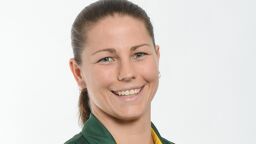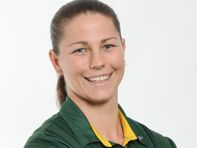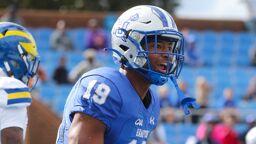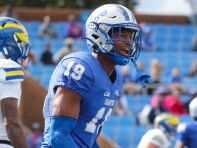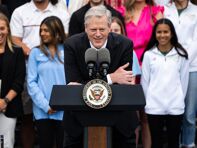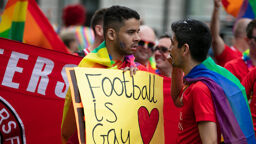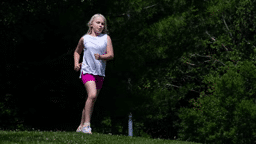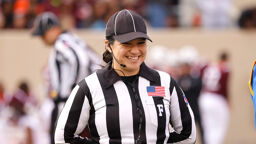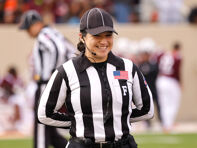It started out drizzly and ended up with drama and excellence in the snow. The 2022 USA Cycling Cyclocross National Championships left some memorable moments along the riverfront of Hartford, Conn., over six days of competition on a 2.2 mile-mix of tarmac, mud, hills and desire.
There were young racers and collegiate athletes, up to masters competitors of all ages. All chasing a jersey of stars and stripes and the title of “national champion”.
The best were at their brightest in the snow Sunday. Clara Honsinger taught a patient, strategic master class for a third-straight elite women’s title. Curtis White rode the fastest lap of the entire week on the final lap of an elite men’s championship in the balance.
The win finally snagged that Stars-and-Stripes champion’s jersey he’s chased since his first nationals as a kid 18 years ago. His scream of joy as he crossed the finish line amid swirling snow told you everything about how much it mattered.

These championships also made a statement for expanding inclusion in cycling and throughout sports starting with the first national championship race for nonbinary cyclists last Saturday. Summer Newlands powered to a win and gave them a national championship they’ve wanted since their beginnings as junior competitor.
“It’s great to see it in a category aligned with my gender and with people I enjoy racing with,” they said. “It’s pretty cool.”
Last Thursday a transgender woman, Jenna Lingwood, clipped in the pedals and won a women’s masters title. She added to a strong week with fifth-place finish in Sunday’s elite women’s event.
In that same elite race, trans cyclist Austin Killips navigated a treacherous track, freezing conditions and fought off a late challenge to finish third. Her smile as she received a bronze medal lit up the podium.
Unlike last year’s nationals that were besieged with anti-trans protests, Killips and Lingwood were cheered by trans people and allies all around the race course.

Some of supporters cheering had never attended a bike race before. With threats of protests looming, they got together and mobilized a cheering section.
The good thing? The protests didn’t happen. The great thing? Many of those supporters, like local resident Cadance Castro, enjoyed what they saw.
“I was happy to see myself represented,” she said. “Happy to see people like me achieving such amazing things.”
Tara Seplavy, deputy editor of Bicycling Magazine, a trans woman and a competitive cyclocross rider herself, also enjoyed that the focus was on racing not rancor.
“There or more people here showing love for trans and nonbinary folks than all the haters combined,” she said. “The takeaway here is for promoters to see what’s happening and that the community will turn out. Invite us in and we will be one with you.”
This is a marked difference from the feeling after the 2021 nationals. There were harsh words and feelings among LGBTQ cycling competitors and supporters. Some of those came from an open letter from a USA Cycling official Flynn Leonard that was signed by more than 80 other club officials, athletes, and other supporters.

USA Cycling’s new leadership updated the code of conduct earlier this year. The governing body also made sure teams, athletes and fans coming to Connecticut for these nationals were aware of it as well.
Even with the afterglow of a great week of competition, harsh memories for trans people in sports and society remain amid an anti-trans wave here in the U.S. and abroad that intensified throughout this year.
Last spring the International Swim Federation and Union Cycliste Internationale made seismic changes to regulations regarding transgender women just weeks apart. Neither change was for any medical, scientific or competitive reasons.
The decisions from both organizations stemmed from outside pressure born of hysteria surrounding two transgender women athletes, American collegiate swimmer Lia Thomas and British cyclist Emily Bridges. Both were legislated against without any proof that their participation would be detrimental to cisgender women in elite competition.
The UCI’s change affected the goals of one of the competitors in the nonbinary division race. Kristin Sundquist, the runner-up last Saturday, was preparing to move into women’s elite competition before the new regulations came down and delayed her plans.

Could having two trans women finishing in the top five of the elite women’s event lead to the same transphobia-driven pressure and another UCI policy change in the near future? Based on what happened with Thomas and Bridges, it’s likely and it’s unnerving. Such hysteria filters down into lower levels of sports, and to areas beyond sports.
There is also the nonbinary options we are seeing more of in endurance sports like cycling, distance running and multievent sports such as triathlon. These are positive steps forward, but they should not be used as a place to put all the so-called “others,” as some calling for “open divisions” would seek.

A competitor from the nonbinary championship race agrees. “A nonbinary category is not a catch-all for queer people,” said Hen Watts, who finished third in the nonbinary division race. “We really need to listen to trans people and believe trans people.”
With these championships in the record books, there is a hope that the push for inclusion continues to grow. As a cyclist, I’m enthused by the work clubs such as Watts’ Breakfast Racing Team, and Killips’ Nice Bikes team are doing to make inclusion a point of emphasis.
The emerging scene in cyclocross, singlespeed and gravel cycling and racing have placed inclusion as a foundation. More clubs and a teams are taking on the mission as well. To see the national and world governing bodies for the sport becoming more a part of this outreach would be another boost upward.
Doing so may lead more of us to grab handle bars, gears and bib numbers and join the fun.
